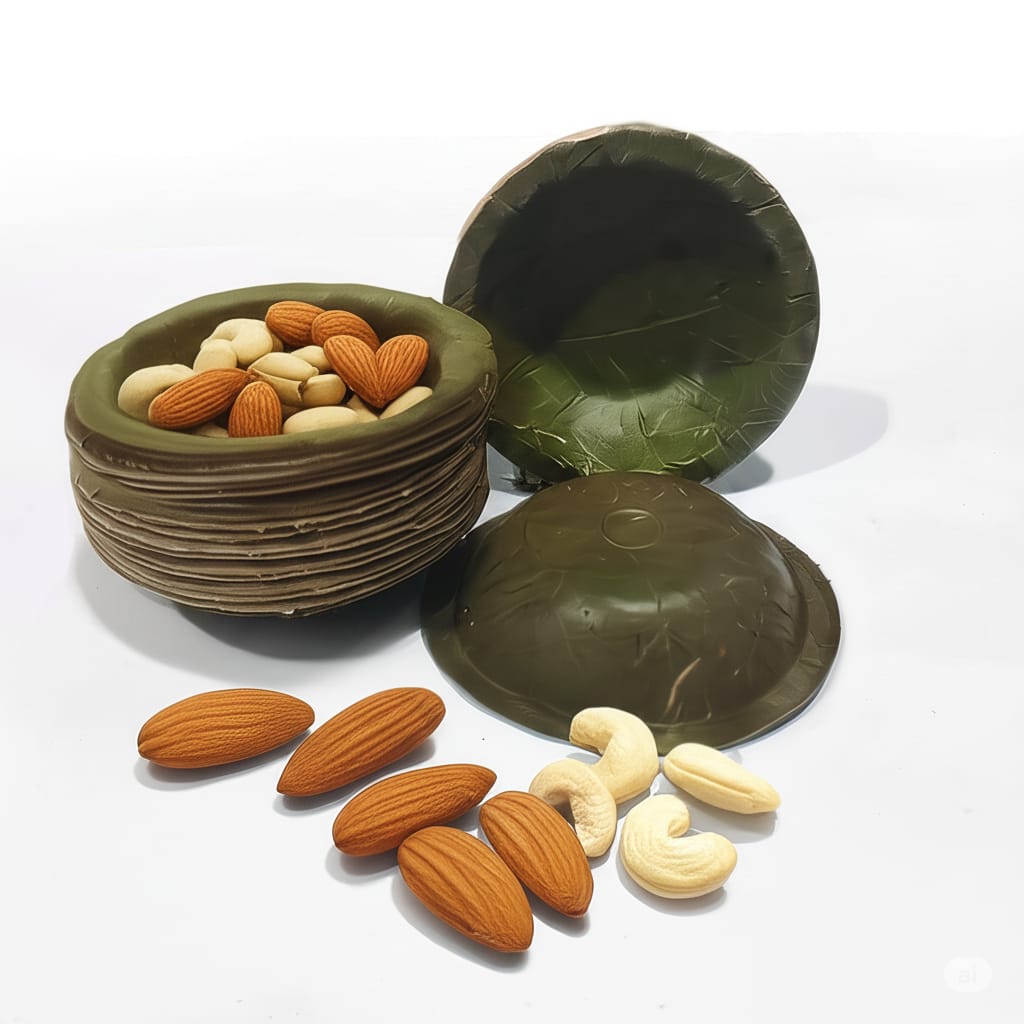Blogs

How Nature Grows What Your Body Truly Needs
What if the best nutritionist wasn’t a person or a product—but nature itself? Long before food pyramids, superfood trends, or lab-made supplements, the natural world was quietly growing exactly what our bodies needed. From the minerals in the soil to the timing of fruit ripening in each season, nature has always been tuned to human biology. The orange that arrives in winter isn’t just delicious—it’s a source of vitamin C when our immune systems need it most. The greens sprouting in spring help cleanse the body after a heavier winter diet. These aren’t coincidences—they’re clues. Modern science is beginning to validate what ancient cultures intuitively knew: that real, whole foods grown in healthy soil and eaten in rhythm with the seasons are far more than fuel. They are biological blueprints—complete with nutrients, enzymes, fiber, and plant compounds designed to protect, repair, and nourish the body in ways no synthetic supplement can match. In this article, we’ll explore the incredible intelligence of natural foods—how soil microbes, plant pigments, and seasonal cycles work together to create nutrient-rich foods that align perfectly with your body’s needs. You’ll discover how nature “packages” nutrition with purpose, and how traditional diets—rooted in locality and simplicity—offer lessons modern health systems are only beginning to rediscover. Let’s take a closer look at how nature has always known what your body truly needs—and how you can align your eating habits with that timeless wisdom. Nature isn’t random. It has spent millions of years refining a system that grows food tailored to the needs of animals, humans included. The more we study this connection, the clearer it becomes: the foods that grow from the earth are not only edible—they’re intelligently designed for health. Humans and plants have co-evolved. We rely on plants for energy, protection, and healing; in return, we help them grow, reproduce, and spread. Over generations, plants developed nutrient profiles that respond to both their needs and ours. Cruciferous vegetables (like broccoli, kale, and cabbage) contain glucosinolates. These help plants fight pests—and help humans detox harmful substances. Berries are rich in anthocyanins. These pigments protect the plant from UV light and, in humans, reduce inflammation and oxidative stress. Garlic and onions contain sulfur compounds that defend plants against soil pathogens. In us, these same compounds support heart health and immunity. Nature rarely delivers nutrients in isolation. A single food offers a combination of vitamins, minerals, fiber, antioxidants, and enzymes. For example, spinach provides iron along with vitamin C, which helps the body absorb that iron more efficiently. Walnuts deliver omega-3s, magnesium, and antioxidants—designed to work together, not separately. Oranges peak in winter, offering vitamin C during cold and flu season. Bitter greens sprout in early spring, supporting digestion and liver cleansing after a heavy winter diet. Pumpkins and squash ripen in autumn, providing slow-digesting carbohydrates and vitamin A to support skin and immunity as the weather cools. Nature has an internal logic. Its foods come with the nutrients we need, at the time we need them, and in forms our bodies are biologically prepared to absorb. This is not by chance—it’s evolutionary alignment. Every nutrient your body absorbs starts its journey underground. Before a plant can offer you vitamins, minerals, or antioxidants, it must first pull those nutrients from the soil. That makes soil the real foundation of human nutrition. Plants absorb minerals like calcium, magnesium, iron, and zinc directly from the soil. If the soil is depleted, those nutrients are missing or present in lower amounts in the final food. A 2022 study published in PeerJ found that regenerative farming practices produced vegetables with significantly higher nutrient density than those grown in conventional systems. Healthy soil is alive. It teems with bacteria, fungi, and other microorganisms that break down organic matter and release nutrients for plants. These microbes make key nutrients—like nitrogen and phosphorus—available in forms that plants (and eventually humans) can actually use. A thriving soil microbiome contributes to better flavor, longer shelf life, and more bioavailable nutrients in food. Conventional farming practices—like tilling, monoculture cropping, and heavy use of synthetic fertilizers—destroy soil structure and reduce microbial life. As soil health declines, crops become weaker and less nutritious. This leads to food that may look fresh and full, but actually contains fewer essential vitamins and minerals than it did decades ago. Practices like cover cropping, no-till farming, and crop rotation help build back soil life. These techniques improve water retention, support biodiversity, and increase the nutritional quality of crops. Some regenerative farms have reported 15 to 30 percent more antioxidants and mineral content in their vegetables compared to conventional counterparts. When you eat food grown in rich, living soil, you're not just getting nutrients—you're benefiting from a deep, invisible ecosystem that supports every layer of health. Soil doesn’t just grow plants. It grows resilience. Nature doesn’t produce food at random times. The cycle of seasons—driven by sunlight, temperature, and rainfall—plays a direct role in shaping what grows, when it grows, and what nutrients it offers. This seasonal design isn’t just ecological—it’s biological. Citrus fruits like oranges, lemons, and amla ripen in winter. That’s when your immune system needs extra vitamin C to fight off colds and flu. Bitter greens like mustard leaves and dandelions appear in early spring. These help stimulate digestion and cleanse the liver after a heavier winter diet. Hydrating fruits like watermelon, cucumber, and lychee thrive in summer. Their high water and electrolyte content helps keep the body cool and balanced. Root vegetables and squashes grow in fall and store well for winter, offering complex carbs, fiber, and beta-carotene for skin and immune health. Plants respond to sunlight by producing compounds that protect them from UV stress. These same compounds—like flavonoids and carotenoids—offer humans protection from inflammation and cellular damage. For example, tomatoes grown in direct sunlight have higher levels of lycopene, a powerful antioxidant linked to heart and skin health. Seasonal foods are fresher, more nutrient-dense, and often easier to digest. Ayurveda and Traditional Chinese Medicine have long taught that seasonal eating helps balance the body’s internal rhythms and prevent disease. Modern nutrition is now validating this wisdom. Studies show that seasonal produce contains higher levels of vitamins and antioxidants compared to out-of-season imports. When we eat seasonally, we align with nature’s clock. It’s not just better for the planet—it’s better for digestion, immunity, and long-term health. When it comes to nutrition, more isn’t always better—especially when it’s separated from its natural context. Nature delivers nutrients in complete packages, not as isolated pills or powders. That difference matters more than most people realize. In a whole food, nutrients are combined with fiber, enzymes, and co-factors that help your body absorb and use them effectively. For example, iron from spinach is better absorbed when paired with vitamin C—which is also naturally present in the same plant. In contrast, isolated nutrients (like a calcium tablet) may be harder for the body to absorb or may not function as intended without other supporting compounds.
Introduction
2: Nature’s Nutritional Blueprint
Plants evolved with us, not apart from us
Natural compounds that serve both plant and human health
Built-in nutrient synergy
Seasonal timing that matches our needs
3: Soil – The Hidden Source of Health
Healthy soil equals healthy food
Microbes make the difference
What damages soil also damages your nutrition
Regenerative farming restores the balance
4: Sunlight, Seasons & Synchronized Nutrition
Seasonal foods match your body’s needs
Sunlight influences plant chemistry
Eating with the seasons supports internal balance
5: Whole Foods vs. Isolated Supplements
Whole foods offer nutrient synergy
Supplements can’t replicate food complexity






















